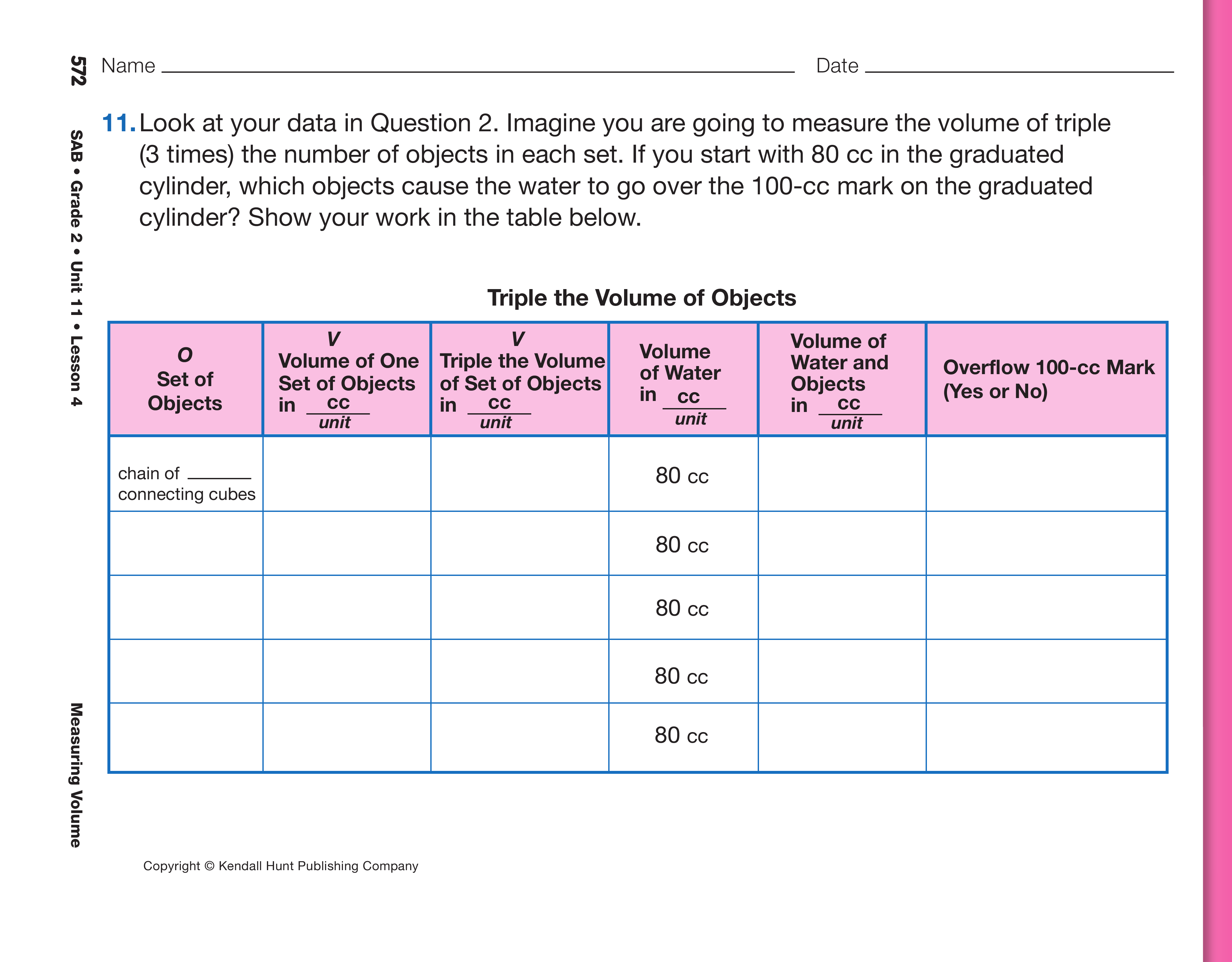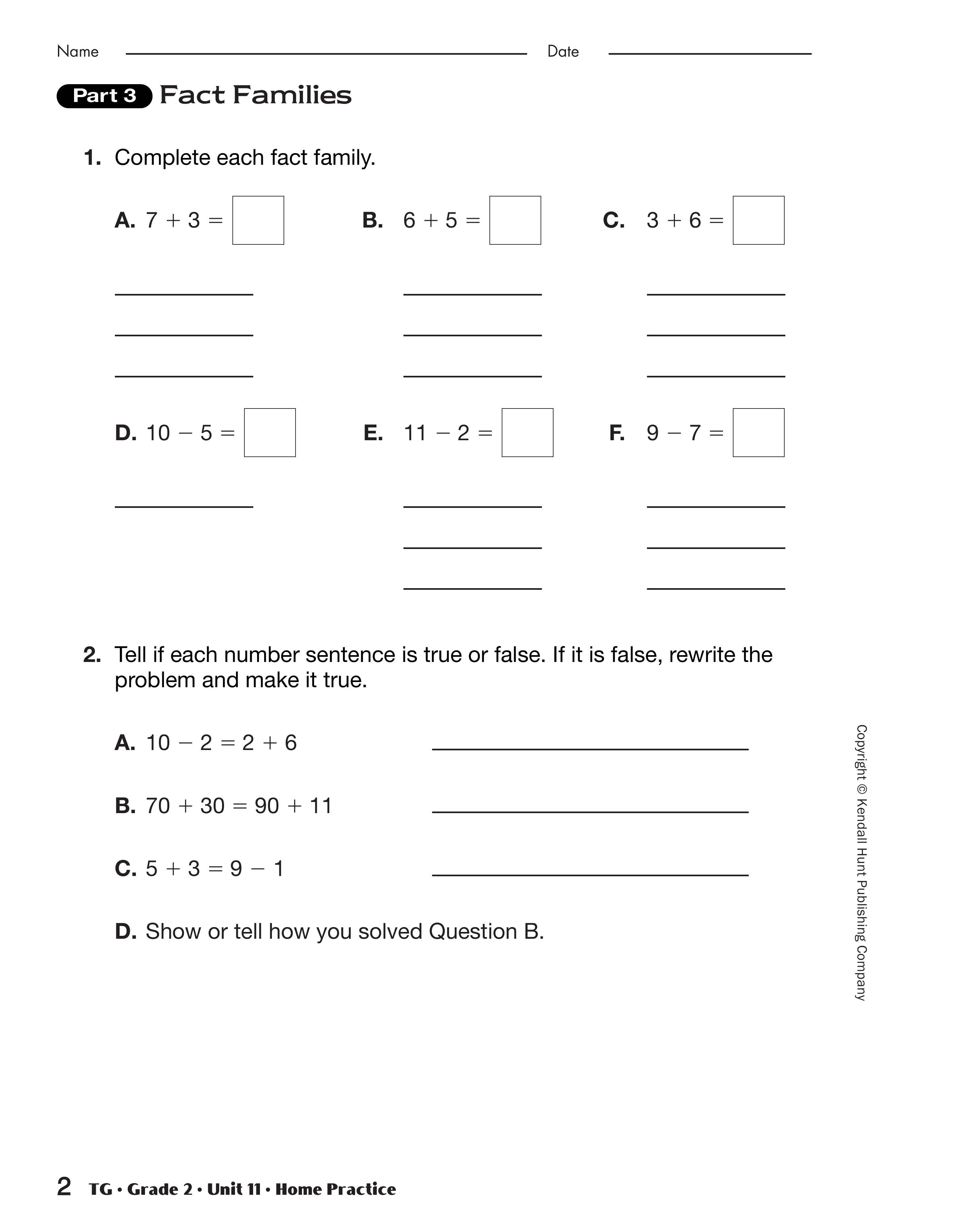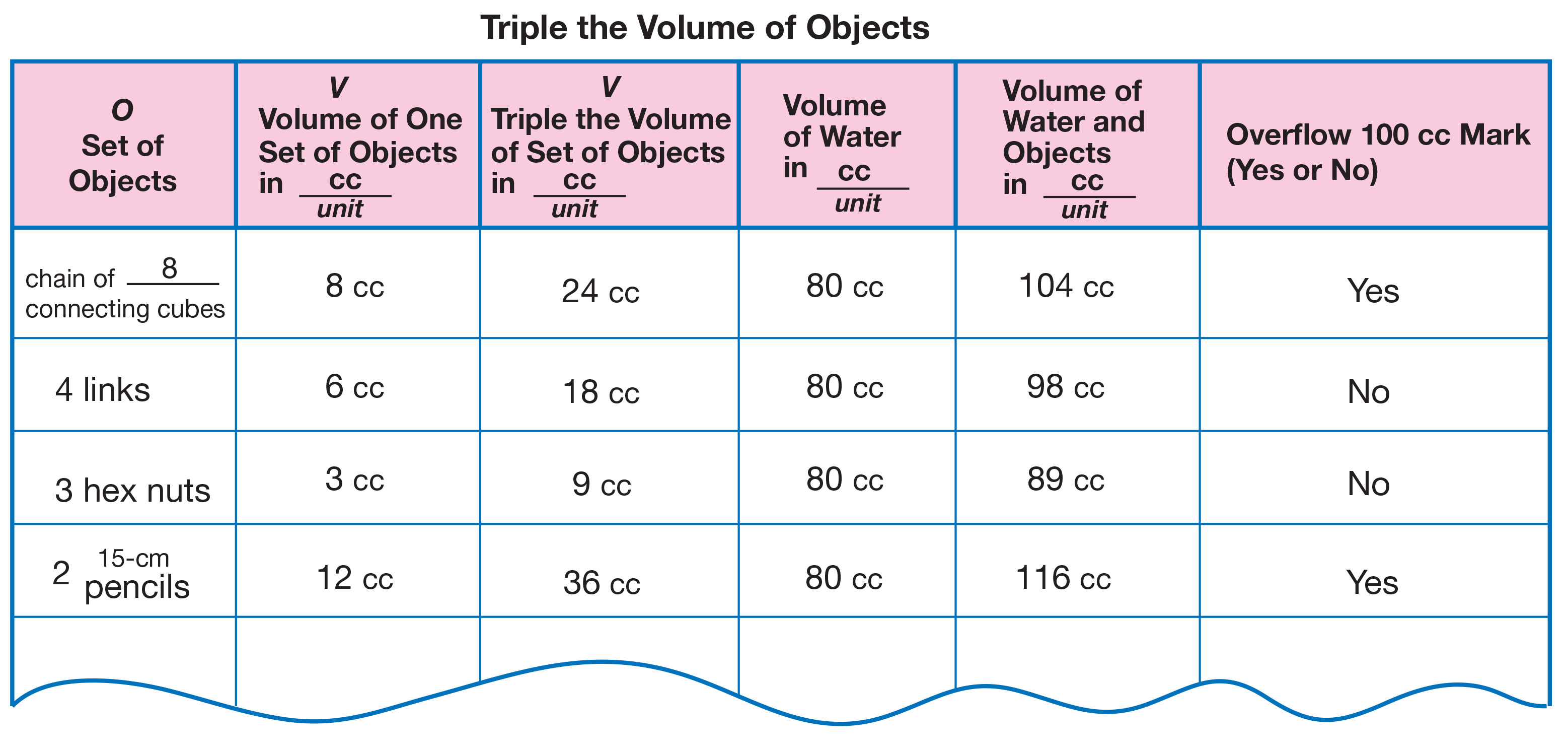Measuring Volume
Est. Class Sessions: 3–4Summarizing the Lesson
Read Question 11 with students. For this question, students have to consider what will happen to the volume and the water level if they triple the volume of the set of objects they measured in Question 2. For the first two columns in the Triple the Volume of Objects data table in Question 11, have students copy the type of objects and the volume for one set of objects from the Measuring Volume data table in Question 2.
After students have completed the first two columns, ask:
Give students sufficient time to find triple the volume of the sets of objects and record these values in the third column of the data table. See Figure 5 for possible strategies for tripling a number.
Next, ask:
Direct students to use the data for triple the volume to calculate what will happen to the water level. See Figure 6 for an example of a completed table.
Upon completion, ask:
















